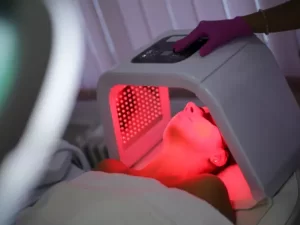Biohacking, also known as “Do-It-Yourself (DIY) Biology”, is the practice of making small, incremental changes to one’s lifestyle, diet, and habits with the goal of improving overall well-being. At its core, biohacking is about understanding and optimising the human body through experimentation, science, and, sometimes, technology. Whether it’s tracking macros to optimise nutrition, using meditation to enhance mental clarity, or incorporating cutting-edge wearables to monitor health metrics, biohacking is a highly personalised approach to self-improvement. The ultimate aim of biohacking is to not only enhance longevity but also to improve how people feel and perform every day.
History and Evolution
The concept of biohacking has roots reaching back centuries, but its modern form began to emerge in the 1980s and ’90s. The early days were shaped by science fiction enthusiasts, DIY biologists, and tech pioneers who sought to apply emerging scientific knowledge to their own health. Over time, the movement gained traction as health-conscious individuals combined traditional health practices with advanced technologies and self-quantification approaches. Companies like Fitbit and Apple have played a significant role in bringing biohacking into the mainstream, developing devices that collect data such as steps, heart rate, and sleep patterns, making it accessible and actionable for millions. Today, biohacking has expanded to encompass a range of practices, from minimal dietary changes to complex genetic engineering.
Core Components of Biohacking
At the heart of biohacking lies the trifecta of personal optimisation: nutrition, exercise, and sleep. Nutrition, considered the foundation of physical and mental health, involves tweaking your diet to find the foods that best support your body. Popular approaches include ketogenic diets, intermittent fasting, and clean eating. Exercise is another pillar, with biohackers tailoring workout routines to enhance strength, endurance, and overall vitality. From high-intensity interval training (HIIT) to yoga, each activity is customised. Sleep optimisation, the often-overlooked component, ensures the body recovers sufficiently. Biohackers invest in weighted blankets, blue-light-blocking glasses, and tracking apps to improve both the quantity and quality of sleep.
Technology and Biohacking
Technology is integral to biohacking, providing biohackers with invaluable data to fine-tune their practices. Wearable devices like smartwatches, fitness bands, and chest monitors have revolutionised self-monitoring by delivering real-time information on everything from heart rate to blood oxygen levels. These devices empower individuals to better understand their bodies and identify patterns that might otherwise go unnoticed. Beyond wearables, advanced technologies such as continuous glucose monitors (CGMs) enable users to track blood sugar trends, even if they don’t have diabetes. Combined with apps that aggregate and analyse data, technology has made biohacking an increasingly science-driven endeavour where trial and error is replaced with data-backed decisions.
Ethical Considerations
While biohacking presents numerous opportunities for self-improvement, it also raises ethical and safety concerns. Are biohacking practices truly safe? For example, while wearables and diet changes may be low-risk, more intrusive practices like implanting RFID chips or experimenting with gene editing carry significant ethical implications. There’s also the question of access and inequality—many advanced biohacking practices and technologies remain prohibitively expensive, making them unavailable to large portions of the population. Advocates emphasise the need for responsible experimentation, transparency of methods and results, and collaboration with medical professionals to ensure that the pursuit of self-optimisation does not lead to harm or widen existing disparities.
DIY Biohacking
For those new to biohacking, accessibility is key. Simple, everyday biohacks can have a significant impact. Start by making minor adjustments to your diet, like including nutrient-dense, whole foods and avoiding processed ingredients. Experiment with different morning or evening routines to see what boosts energy, productivity, or relaxation. Mindfulness practices, such as meditation or journaling, can help manage stress. Sleep improvements, such as blackout curtains or consistent bedtime schedules, are another area where beginners can see results. What’s important is to monitor your responses and gradually build on your practices as confidence grows. Remember, biohacking is about taking small steps to create lasting improvements.
Advanced Biohacking
For experienced biohackers, the pursuit might extend into more advanced and complex territory. For example, neurofeedback training can help optimise mental performance by training the brain to self-regulate. Cryotherapy, or exposing the body to extremely low temperatures, is increasingly popular for its purported benefits on muscle recovery and inflammation reduction. Some biohackers even explore genetic modifications, such as using CRISPR technology, though these practices remain controversial. Others integrate supplements like nootropics to enhance cognitive functions. Advanced biohacking undoubtedly requires deeper knowledge and greater expertise, but it offers the potential for groundbreaking results for those willing to experiment.
The Future of Biohacking
The future of biohacking is poised to be even more innovative. Advances in machine learning and artificial intelligence may soon allow biohackers to collect and analyse data to predict illnesses and intervene before symptoms appear. Personalised medicine is another area set to revolutionise biohacking. Imagine a world where therapies, diets, and supplements are custom-designed for your DNA. Ethical debates around practices such as gene editing and human augmentation will likely intensify as the technology advances, but the possibilities are staggering. The integration of biofeedback devices into everyday items, coupled with the rise of AI-driven health assistants, means biohacking will only become easier for everyday users.
Risks and Benefits
Biohacking comes with its unique blend of risks and rewards. On the positive side, biohacking empowers individuals to take control of their health, leading to higher energy levels, better productivity, and potentially a longer lifespan. It encourages a data-driven approach to well-being, promoting self-awareness and experimentation. However, it’s not free of pitfalls. Misguided experimentation, overly aggressive interventions, and inaccurate data interpretation can lead to unintended consequences. Additionally, the potential for over-reliance on technology could obscure the fundamental human aspects of health and wellness. Balancing the benefits with a cautious approach is critical for safe and effective biohacking.
Conclusion
Biohacking is more than just a set of practices—it’s a way of thinking about how we interact with our bodies and the world around us. For those willing to explore its potential, it offers a dynamic path to better health and performance. Whether you’re adjusting your diet, tracking your sleep cycle, or looking into cutting-edge technology to optimise your life, the possibilities are vast. If you’re curious and ready to start biohacking your way to a better you, begin with the practices that resonate most with your goals. Take it slow, measure your results, and, above all, enjoy the process.




